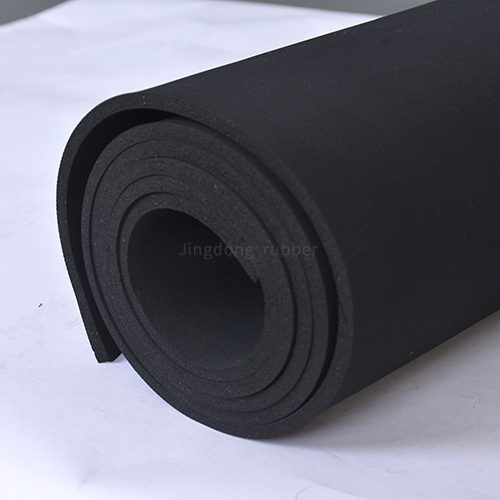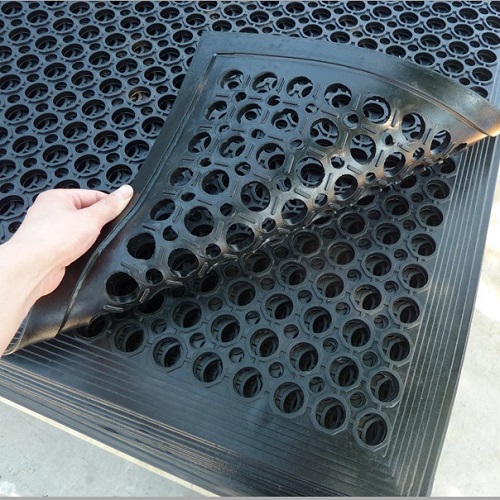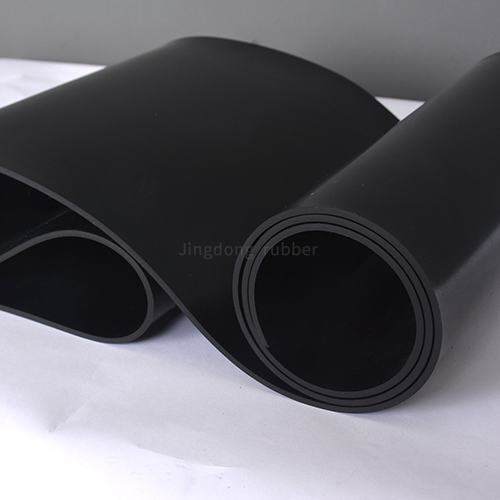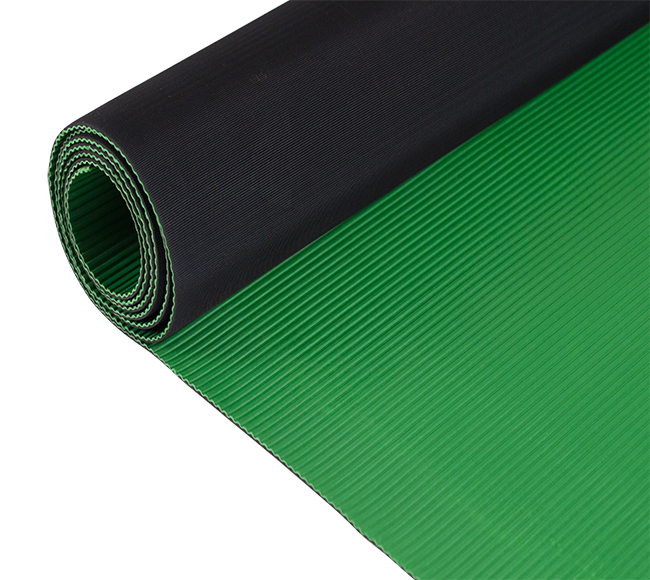Low Pressure Change Silicone Rubber Sheet
Understanding Low Pressure Change Silicone Rubber Sheet
Low Pressure Change Silicone Rubber Sheet is a specialized elastomeric material engineered for applications demanding minimal compression set under sustained low pressure. It is manufactured using high-purity silicone polymers and advanced curing techniques to ensure consistent performance, flexibility, and durability. This material is ideal for industries such as aerospace, automotive, medical devices, and electronics, where maintaining a reliable seal or cushion under low-load conditions is critical. Unlike standard silicone sheets, this variant excels in environments with fluctuating temperatures and pressures, offering long-term stability and resistance to deformation.
The primary advantage of low pressure change silicone rubber sheets lies in their ability to retain original thickness and sealing properties even after prolonged exposure to compressive forces. This makes them suitable for gaskets, seals, insulators, and padding in equipment that operates with minimal mechanical stress. Additionally, these sheets exhibit excellent resistance to ozone, UV radiation, moisture, and many chemicals, ensuring longevity in diverse operational settings.
Key Product Parameters and Specifications
To help you evaluate the suitability of low pressure change silicone rubber sheets for your projects, we have compiled detailed parameters below. These specifications are based on industry standards and rigorous testing protocols.
Material Composition and Physical Properties
- Base Polymer: High-consistency silicone rubber (VMQ)
- Reinforcement: Fiberglass or polyester fabric (optional)
- Color Options: Red, black, white, gray, and custom colors
- Standard Thickness: 0.5 mm to 6.0 mm
- Standard Sheet Size: 1m x 1m, 1.2m x 1.2m, or custom dimensions
- Density: 1.15 - 1.25 g/cm³
- Tensile Strength: 8 - 10 MPa
- Elongation at Break: 400% - 600%
- Hardness (Shore A): 30 - 70
Performance Characteristics
| Property | Test Method | Value Range |
|---|---|---|
| Compression Set (22 hrs @ 25°C) | ASTM D395 | < 10% |
| Low Pressure Change Performance (at 0.1 - 0.5 MPa) | Custom Fixture Test | Thickness change < 5% |
| Temperature Resistance | ASTM D1329 | -60°C to +250°C |
| Thermal Conductivity | ASTM D5470 | 0.15 - 0.25 W/m·K |
| Dielectric Strength | ASTM D149 | 20 - 25 kV/mm |
| Flame Resistance | UL 94 | V-0 rated |
| Water Absorption | ASTM D570 | < 1% |
Chemical Resistance Profile
| Chemical Exposure | Resistance Level | Notes |
|---|---|---|
| Water, Sea Water | Excellent | No significant swelling or degradation |
| Ozone, UV Light | Excellent | No cracking or hardening observed |
| Dilute Acids and Alkalis | Good | Minor surface effect after prolonged exposure |
| Oils, Greases | Fair to Good | Dependent on oil type; silicone-based oils may cause swelling |
| Alcohols, Ketones | Fair | Limited use recommended; test before full application |
Applications of Low Pressure Change Silicone Rubber Sheet
This material is versatile and used across multiple sectors due to its reliable performance under low pressure conditions. Common applications include:
- Electronics: Gaskets for enclosures, thermal pads for heat dissipation, and insulation in low-pressure environments.
- Automotive: Seals for sensors, cushioning in control modules, and vibration dampers in electric vehicles.
- Aerospace: Sealing components in avionics, thermal barriers, and padding in satellite systems.
- Medical Devices: Seals in diagnostic equipment, cushioning in prosthetics, and isolators in imaging machines.
- Industrial Machinery: Gaskets for low-pressure hydraulic systems, insulation in electrical cabinets, and protective linings.
Frequently Asked Questions (FAQs)
What is the primary advantage of using a low pressure change silicone rubber sheet?
The main advantage is its minimal compression set under sustained low pressure, meaning it maintains its original thickness and sealing effectiveness over time. This ensures long-term reliability in applications where consistent performance is crucial, such as in gaskets or seals that are not subjected to high mechanical loads but need to endure continuous pressure.
How does the low pressure change silicone rubber sheet perform in high-temperature environments?
It performs exceptionally well in high-temperature settings, with a continuous service range from -60°C to +250°C. The material retains its elasticity, mechanical properties, and low compression set even after prolonged exposure to heat, making it suitable for applications near engines, electronic components, or industrial ovens.
Can this silicone rubber sheet be customized for specific thickness or hardness requirements?
Yes, it can be customized in terms of thickness (from 0.5 mm to 6.0 mm or beyond), hardness (Shore A 30 to 70), color, and reinforcement with materials like fiberglass. Custom formulations are also available to meet specific chemical resistance or dielectric properties based on application needs.
What is the typical lifespan of a low pressure change silicone rubber sheet in outdoor applications?
When used outdoors, the sheet typically lasts 10 to 20 years, depending on environmental factors such as UV exposure, ozone levels, and temperature cycles. Its excellent resistance to weathering, ozone, and UV radiation helps prevent cracking, hardening, or degradation, ensuring prolonged service life.
Is the low pressure change silicone rubber sheet suitable for food-grade or medical applications?
Yes, it can be manufactured to meet food-grade standards (such as FDA CFR 21) or medical certifications (like USP Class VI) upon request. These grades use high-purity, non-toxic silicone compounds and are tested for biocompatibility, making them safe for direct or indirect contact with food or human tissues.
How does the compression set of this material compare to standard silicone rubber sheets?
The compression set of low pressure change silicone rubber sheets is significantly lower, typically below 10% under standardized testing, whereas standard silicone sheets may exhibit compression sets of 20% or higher. This difference ensures better dimensional stability and sealing integrity in low-pressure applications.
What cleaning agents are safe to use with low pressure change silicone rubber sheets?
Mild soap solutions, isopropyl alcohol, or water are generally safe for cleaning. Avoid strong solvents like acetone, toluene, or concentrated acids, as they may cause swelling or surface damage. For critical applications, it is advisable to test cleaning agents on a small sample first.
Can these sheets be die-cut or fabricated into complex shapes?
Absolutely. The material is easy to die-cut, laser-cut, punch, or mold into complex shapes without compromising its properties. This flexibility allows for precise customization to fit specific design requirements, such as intricate gaskets or insulated components.
What is the lead time for ordering custom-sized low pressure change silicone rubber sheets?
Lead times for custom orders typically range from 2 to 6 weeks, depending on the complexity, quantity, and specific requirements like reinforcement or special certifications. Standard sizes and grades are often available for quicker shipment, usually within 1 to 2 weeks.
Does the low pressure change silicone rubber sheet support adhesive backing for easier installation?
Yes, adhesive backing options such as acrylic or silicone-based pressure-sensitive adhesives (PSA) can be applied to one or both sides. This feature simplifies installation in applications like thermal pads, seals, or mounting pads, providing strong adhesion to various surfaces including metals, plastics, and ceramics.
- View as






